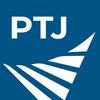Written Mobility Communication in Acute Care Medical Wards: An Observational Study of Physical Therapists’ and Nurses’ Documentation Practice
IF 3.5
4区 医学
Q1 ORTHOPEDICS
引用次数: 0
Abstract
Objective Low inpatient mobility is associated with poor hospital outcomes. Poor communication between clinicians has been identified as a barrier to improving mobility. Understanding how mobility is communicated within the multi-disciplinary team may help inform strategies to improve inpatient mobility. The aim of this study was to describe written mobility communication by physical therapists and nurses in acute care medical wards. Methods This cross-sectional observational study was conducted across 4 hospitals in an Australian health service. A survey of physical therapists and nurses identified preferred sources and content of written mobility communication. An audit described and compared written mobility communication in the most strongly preferred documentation sources. Findings were described and compared graphically between discipline and site. Results Questionnaires were completed by 85 physical therapists and 150 nurses. Twenty-two sources of documentation about mobility were identified. Preferences for sources and content varied between disciplines. Physical therapists nominated several preferred information sources and sought and documented broader mobility content. Nurses often sought nursing documents which focused on current mobility assistance and aids, with limited communication of mobility level or mobility goals. Audits of 104 patient records found that content varied between sources and sites, and content was variably missing or inconsistent between sources. Conclusion Written mobility communication focused on mobility assistance and aids, rather than mobility levels or mobility goals, with poor completion and inconsistency within documentation. More complete and consistent documentation might improve progressive mobilization of hospital inpatients. Impact statement Physical therapists and nurses seek and document different content in a wide range of locations, leading to incomplete and inconsistent written documentation. Understanding and resolving these practice differences offers potential to improve mobility communication and practice.急诊病房中的书面移动交流:物理治疗师和护士文件记录实践的观察研究
目标 住院病人行动不便与住院效果不佳有关。临床医生之间沟通不畅已被认为是改善移动能力的一个障碍。了解多学科团队之间如何交流移动能力,有助于制定改善住院患者移动能力的策略。本研究旨在描述急诊内科病房中物理治疗师和护士的书面移动沟通情况。方法 这项横断面观察性研究在澳大利亚一家医疗服务机构的 4 家医院中进行。通过对理疗师和护士进行调查,确定了书面移位沟通的首选来源和内容。一项审计描述并比较了最受青睐的文件来源中的书面移位沟通内容。调查结果在不同学科和地点之间进行了描述和图形比较。结果 85 名理疗师和 150 名护士填写了调查问卷。确定了 22 种有关移动能力的文件来源。不同学科对资料来源和内容的偏好各不相同。物理治疗师提名了几个首选信息来源,并寻求和记录了更广泛的移动性内容。护士通常寻求的护理文件主要集中在当前的移位协助和辅助工具上,而对移位水平或移位目标的交流则很有限。对 104 份病历的审核发现,不同来源和地点的内容各不相同,不同来源的内容也存在缺失或不一致的情况。结论 书面的移位沟通主要集中在移位辅助工具上,而不是移位水平或移位目标上,文件的完整性和一致性较差。更完整、更一致的文件记录可能会改善住院患者的渐进式移动。影响陈述 物理治疗师和护士在不同的地方寻求和记录不同的内容,导致书面记录不完整和不一致。了解并解决这些实践中的差异,为改善移动交流和实践提供了可能。
本文章由计算机程序翻译,如有差异,请以英文原文为准。
求助全文
约1分钟内获得全文
求助全文
来源期刊

Physical Therapy
Multiple-
CiteScore
7.10
自引率
0.00%
发文量
187
审稿时长
4-8 weeks
期刊介绍:
Physical Therapy (PTJ) engages and inspires an international readership on topics related to physical therapy. As the leading international journal for research in physical therapy and related fields, PTJ publishes innovative and highly relevant content for both clinicians and scientists and uses a variety of interactive approaches to communicate that content, with the expressed purpose of improving patient care. PTJ"s circulation in 2008 is more than 72,000. Its 2007 impact factor was 2.152. The mean time from submission to first decision is 58 days. Time from acceptance to publication online is less than or equal to 3 months and from acceptance to publication in print is less than or equal to 5 months.
 求助内容:
求助内容: 应助结果提醒方式:
应助结果提醒方式:


